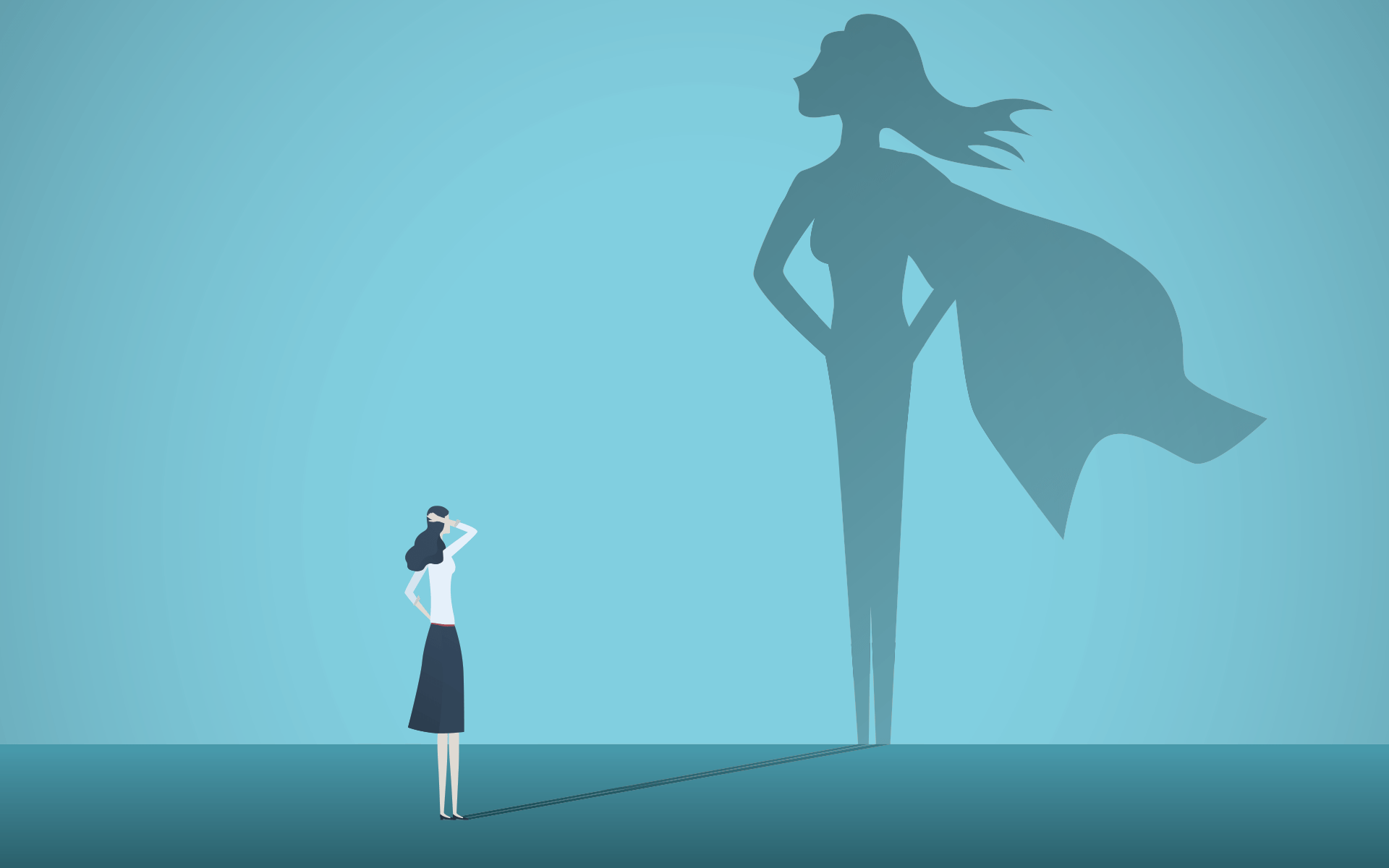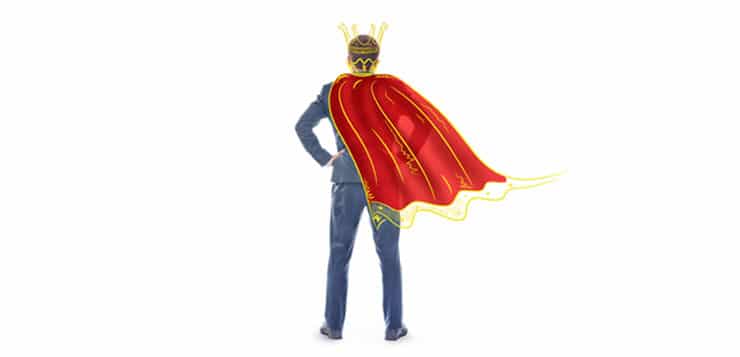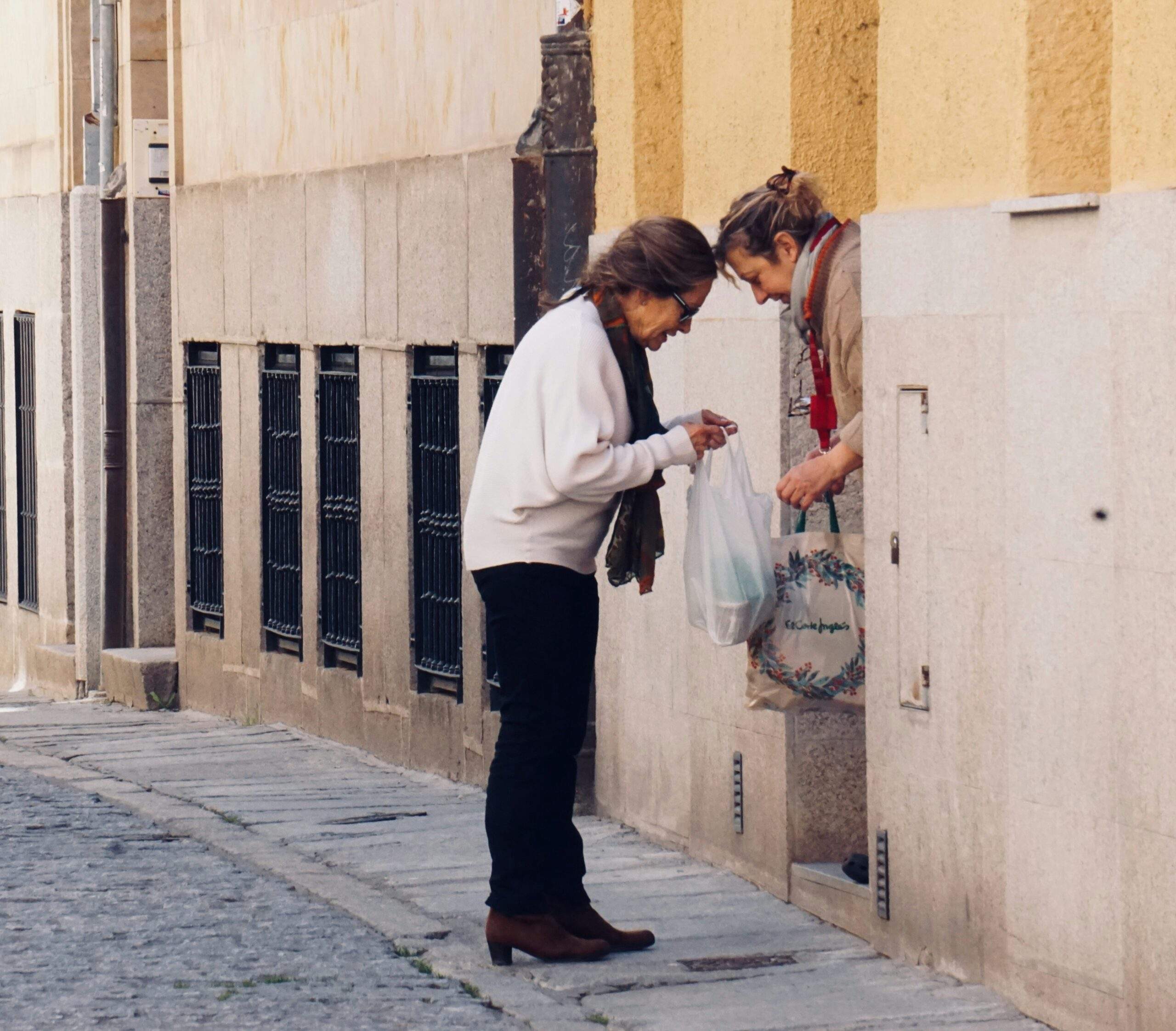Mirrors can evoke strong feelings in us – and they can also be incredibly powerful tools for changing our perspective and seeing parts of ourselves that are usually hidden as we look out into the world.
Our desire to be seen and reflected is basic and innate. As children, we learn to understand ourselves through the reflections of those around us. In fact, psychologists have found that face-to-face contact is essential for our social and emotional development. As we spend more time alone and on our devices, we miss out on this social reflection. Through the mirror, we can come face-to-face with ourselves at any time.
A practice that I have developed using a mirror mindfully in meditation can help uncover kinder self-awareness and strengthen our resilience to meet life’s challenges.
Learning to tune into your image will not turn you into a towering narcissist. Quite the opposite: you’ll learn to stay present with yourself, manage the intensity of your emotions, and tap into a new inner strength. In fact, kinder self-awareness is the key to breaking free from the inner critic and the external world that stokes our fears and anxieties that we are never safe, never good enough, and never have enough.
Learning About Yourself by Looking at Yourself
When I was a little girl, I used to look at myself in the side of the shiny chrome toaster on the table, entranced by the expressions that crossed over my face, sometimes exaggerating them, and imitating the adults around me. Looking at my own reflection filled me with amusement and curiosity and it helped me understand and express emotions. I was able to see how I felt and what I looked like while I was feeling it. This seemed to soothe me and was somehow affirming.
As I grew older I learned, like most of us do, to use the mirror to monitor my appearance and critique it based on cultural standards of beauty — finding endless flaws and imperfections. Occasionally, I’d rest my gaze for just a moment and look into my own eyes – who was I? How was I really feeling?
One day I caught a glimpse of my face in the mirror and was shocked by how sad and distressed I looked — I’d barely realized I felt that way thinking I felt “fine.” I came to realize that I’d been cultivating an image of myself that I thought would be pleasing to other people, and in the process, I’d lost touch with how I felt inside.
Learning to tune into your image will not turn you into a towering narcissist. Quite the opposite: you’ll learn to stay present with yourself, manage the intensity of your emotions, and tap into a new inner strength.
I began to take time to look at my reflection in the mirror, not to focus on my appearance or to imagine how I looked to others, but to simply acknowledge myself and get in touch with how I felt. In doing this over time, I found a way to look past the imperfections in my appearance and see deeper into my own eyes with compassion. It became a meditation. A way to simply be present with no goal other than to be there with myself.
Simply setting a time every day to give myself my own undivided attention became a precious respite from my busy life. I looked forward to having the time to simply rest and relax in my own presence.
But it wasn’t an exercise in self-adoration.
I didn’t sit there blowing kisses at myself. Rather, it was a check-in to how I was feeling about myself, my appearance, my emotions, and the various running dramas in my life. My face revealed a lot – and some of it wasn’t easy to see. I disciplined myself to look at myself regardless of how I was feeling or how many distractions there were in my life. After doing this mirror meditation for at least 10 minutes a day for over a year, I noticed a profound difference — and others did too.
Over time, I learned to approach myself in a way that felt natural, accepting, and kind — and became less self-conscious about my appearance in the process. I also came to use the mirror to manage day-to-day stresses and distractions.
Instead of searching outside myself for people, places and things that would distract me from negative emotions or self-criticism, I used the mirror to face myself and ground myself by simply looking into my own eyes with compassion. I found the mirror was a great way to work out my emotions, too. When I was struggling with negative feelings and there was no one who could lend a compassionate ear—or I just didn’t want to upset anyone or say something I’d regret — the mirror became a powerful reflector of my own pain and suffering.
The mirror offered a perspective that I couldn’t see from inside my own head. I saw myself in a way that was often just too raw and vulnerable to share with others. Looking in the mirror, I was often flooded with a feeling of compassion and appreciation for how much I do and how hard I try — instead of relying on affirmations from others or validation from whatever I was currently defining as “success,” I simply acknowledged myself unapologetically with love and compassion. I didn’t have to do anything, I was worthy of love and compassion by simply being.
My motives for connecting with others were clearer: It was less about getting them to see me and validate me and think I was wonderful, and more about discovering who they truly are, and what they are communicating beyond their words.
Occasionally, my inner critic would erupt, “Isn’t this a bit narcissistic?” “Aren’t you being selfish?” “Shouldn’t you be focusing on helping others less fortunate instead of looking at yourself in the mirror?” When I stopped to really consider these critiques and ask myself how mirror gazing influenced my relationships and general approach to life, I found it had, in fact, created a profound shift. But the irony was that by making time to see myself in the mirror I was actually more interested in making deep connections with others, not less.
Why? My motives for connecting with others were clearer: It was less about getting them to see me and validate me and think I was wonderful, and more about discovering who they truly are, and what they are communicating beyond their words. A common saying is that there are two sides of a conversation: talking and waiting to talk. In the urgency to be seen and acknowledged and understood, we can completely miss each other. By seeing ourselves, we can practice self-compassion about our own needs and build our capacity to see others with compassion.
Teaching the Mirror Meditation
The mirror became such a useful tool for me that I wanted to share it with others. For the last seven years, I have been teaching mirror meditation. By combining mirror gazing with the principles of mindfulness meditation, students meditate on their own reflection.
At first, most people seem very awkward and self-conscious. Their faces tense, eyes harsh and critical as they look at themselves, adjusting this and that. Then as they share what they are experiencing, I guide them to look beyond their surface appearance, put aside their habitual stories, and take a deeper look at themselves. I invite them to see themselves as the person who is suffering instead the object of their criticism. Often, they are able to shift their attention from seeing their imperfections to seeing themselves as the sufferer and the creator of the suffering in the mirror. Something clicks. Usually, by the end of the session, their faces soften and over time they seem calmer and more self-accepting, kinder to themselves and more trusting of their own experience.
Sometimes these changes have been quite miraculous. Many have reported deep insights in how they see themselves and how it influences their lives, by simply taking the time to give themselves their full attention, allowing people to cut through their self-delusions and develop kinder and more accurate self-awareness. Some have found it to be a powerful tool to support their programs of personal development, as in psychotherapy, life coaching, addiction recovery, and life-transition support groups.
As the work continued, I asked my mirror gazing students to describe in their own words any changes they noticed from doing the meditation. When the content of these written responses were analyzed, three themes consistently stand out.
And the mirror revealed just how much their criticisms were affecting them because they could see it on their face.
First, they became aware of just how much they criticized themselves — whether it was their appearance or some other aspect of themselves that they habitually found unacceptable. The mirror brought it to light. And the mirror revealed just how much their criticisms were affecting them because they could see it on their face! Then they had a choice, and a practice, to treat themselves with more acceptance and compassion.
The mirror also reflected their facial expressions so they were much more aware of how they were feeling moment-to-moment which at first was a bit shocking for many. Some became more aware of emotions they typically avoided like fear, anger, or disgust, that they hadn’t noticed before. They found that their capacity to feel and accept a broader range of emotions increased from doing the meditation.
And lastly, many noticed a positive impact on their relationships, which might seem a bit counterintuitive. They became much more aware of how they were seeing others and being seen. It seems that by practicing giving themselves their full attention and learning how to be with themselves through uncomfortable emotions, they were able to be more present with others and their relationships deepened.
Why Mirror Meditation Works
Why is mirror-gazing so powerful and effective? As I delved into the neuroscience and psychology research, the pieces of the puzzle came together. Research tells us that we need face-to-face contact to develop a sense of self, to manage our emotions, and to develop empathy for others. We come to understand who we are through others’ reflections of us. And in seeing their faces, we learn how they feel and how we feel in turn. We practice modulating our expressions moment-to-moment based on their reactions to us. This is the foundation for learning to regulate our emotions and navigate complex social situations.
As we spend more time alone and on our devices, we miss out on the face-to-face reflection that helps us stay emotionally connected to ourselves. The mirror can be a valuable tool for maintaining that connection. The mirror reflects the quality of the relationship we have with ourselves. In my work, it has been astonishing to see how unkind people can be to themselves without even realizing it. The mirror reflects our self-criticism with exquisite accuracy and then mirror meditation provides a choice, and a practice, to treat ourselves with kindness.
Practice the Mirror Meditation
I recommend 10 minutes of silent mirror gazing per day. Here are some simple guidelines.
1. Set the space and intention.
Choose a well-lit distraction-free space where you can position a mirror so that it’s freestanding and you can see into your eyes without straining or leaning forward. Sit on a meditation cushion or on a chair with both feet on the ground. Set a timer for 10 minutes. Have no goals other than to sit with yourself for the allotted time.
2. Tune into your breathing.
Begin with your eyes closed. Tune in to your breath. Are you holding your breath or breathing rapidly? Take a few slow, deep belly breaths. Then breathe regularly and naturally, just observing your breath move your belly, ribcage and collarbones as you inhale and then gently contracting your collarbones, ribcage and belly as you exhale. Notice any areas of tension in your body, especially your face and shoulders, then imagine sending your breath to relax those areas and letting tension melt away.
3. Begin to gaze into your eyes.
Notice if your breathing changes when your first look at yourself. Come back to full steady breathing. Notice the quality of your gaze: Is it harsh or soft? Try to soften your gaze as much as you can. If you notice yourself hardening by focusing on a detail or a flaw in your appearance – breathe until you feel yourself softening again.
4. Observe your critic.
If your initial reaction to looking at yourself is critical, notice your eyes as you look at yourself in this exacting, maybe even harsh or cold way – see if you can flip your attention from the person (or image in the mirror) that you are scrutinizing to seeing the person who is underneath receiving that scrutiny – that’s who you really are. How does that part of you feel be receiving those critiques?
5. Notice where your attention goes and associated feelings.
Gaze at your reflection, staying open to whatever arises. Notice any sensations or emotions that come up and allow them to simply be there without judgment or interpretation. Let your feelings and thoughts simply pass by as you breathe, relax your body, and gaze at yourself with no goal other than to be present with yourself. Notice if your attention becomes very narrow and exacting, and if so, see if you can expand it back to seeing your whole body, your whole self, and notice any emotions on your face. Observe this expansion and contraction of your attention and the thoughts and images that come to mind. Just noticing where your attention goes and any feelings that are associated with it without judgment. Hold a kind intention toward yourself as you do the practice. You may be surprised how much your view of yourself can change over the course of 10 minutes.
Watch the TEDx Talk: What Mirror Meditation Can Teach You
read more
Three Ways to Foster Self-Worth
When self-doubt takes over, we can begin to lose our sense of purpose and identity. Here’s how you can be more confident in the choices you make. Read More
Disarming the Narcissist
Dr. Michael Gervais speaks with clinical social worker Wendy Behary about how to identify and approach someone with narcissistic tendencies. Read More










